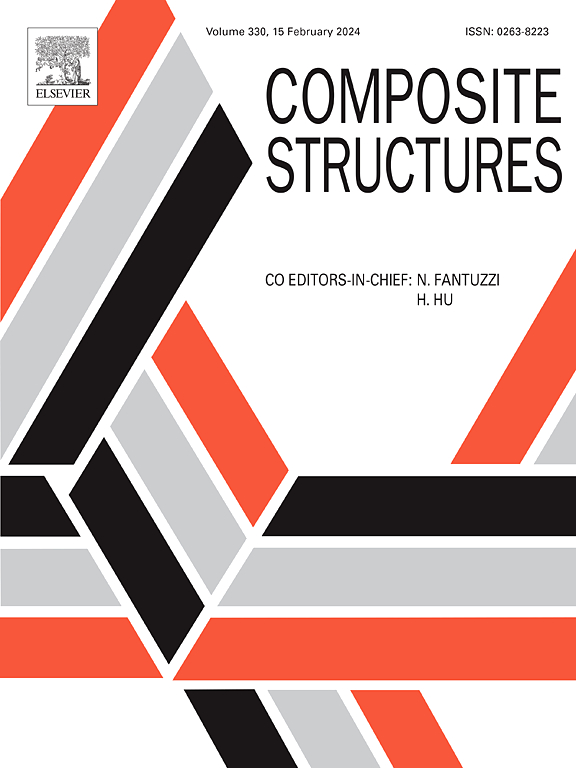Metaheuristic-based prediction of flexural strength and dual-objective optimization for circular concrete-filled steel tubes
IF 7.1
2区 材料科学
Q1 MATERIALS SCIENCE, COMPOSITES
引用次数: 0
Abstract
Concrete-filled steel tube (CFST) structures are extensively used in high-rise buildings, bridges, and subway stations due to their superior mechanical properties. However, accurately predicting their flexural strength capacity (Mu) remains challenging, as traditional empirical models and design codes fail to capture the complex nonlinear interactions between steel and concrete, leading to significant errors. To address this limitation, an advanced Jellyfish Search Optimizer (JSO)-enhanced XGBoost model is proposed, significantly improving Mu prediction accuracy. The model achieves R2 = 0.9986 and RMSE = 5.81 kNm on the test set, demonstrating outstanding predictive performance. Moreover, Shapley Additive Explanations (SHAP) and Partial Dependence Plots (PDP) enhance model interpretability by revealing feature importance and interactions. Additionally, comparisons with AISC, Eurocode 4, and Han’s Equation confirm its superiority. Furthermore, a user-friendly graphical user interface (GUI) is developed to enable real-time Mu predictions, facilitating practical engineering applications. Finally, the Non-Dominated Genetic Sorting algorithm II (NSGA-II) was employed for dual-objective optimization, successfully balancing and material cost (Ctotal) of CFST.
基于元启发式的圆形钢管混凝土抗弯强度预测及双目标优化
钢管混凝土结构以其优越的力学性能被广泛应用于高层建筑、桥梁和地铁车站。然而,准确预测其抗弯强度能力(Mu)仍然具有挑战性,因为传统的经验模型和设计规范无法捕捉钢与混凝土之间复杂的非线性相互作用,导致显着误差。为了解决这一限制,提出了一种先进的水母搜索优化器(JSO)增强的XGBoost模型,显著提高了Mu的预测精度。该模型在测试集上达到R2 = 0.9986, RMSE = 5.81 kNm,表现出出色的预测性能。此外,Shapley加性解释(SHAP)和部分依赖图(PDP)通过揭示特征的重要性和相互作用来增强模型的可解释性。此外,与AISC、Eurocode 4和Han’s Equation的比较证实了其优越性。此外,开发了一个用户友好的图形用户界面(GUI),以实现实时Mu预测,促进实际工程应用。最后,采用非支配遗传排序算法II (NSGA-II)进行双目标优化,成功平衡了CFST的Mu和材料成本(Ctotal)。
本文章由计算机程序翻译,如有差异,请以英文原文为准。
求助全文
约1分钟内获得全文
求助全文
来源期刊

Composite Structures
工程技术-材料科学:复合
CiteScore
12.00
自引率
12.70%
发文量
1246
审稿时长
78 days
期刊介绍:
The past few decades have seen outstanding advances in the use of composite materials in structural applications. There can be little doubt that, within engineering circles, composites have revolutionised traditional design concepts and made possible an unparalleled range of new and exciting possibilities as viable materials for construction. Composite Structures, an International Journal, disseminates knowledge between users, manufacturers, designers and researchers involved in structures or structural components manufactured using composite materials.
The journal publishes papers which contribute to knowledge in the use of composite materials in engineering structures. Papers deal with design, research and development studies, experimental investigations, theoretical analysis and fabrication techniques relevant to the application of composites in load-bearing components for assemblies, ranging from individual components such as plates and shells to complete composite structures.
 求助内容:
求助内容: 应助结果提醒方式:
应助结果提醒方式:


